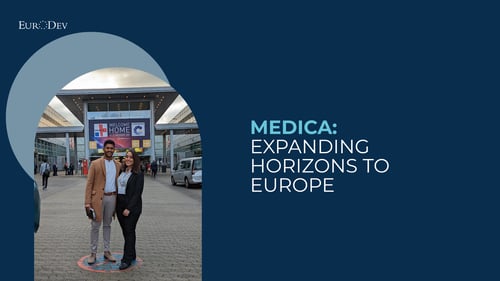EU Medical Devices Regulations – Unique Device Identifier (UDI)
The new EU medical device regulations (MDR) were adopted by the European Union in April 2017 and came into force in May 2017. The application dates of these regulations apply as of May 26th, 2021 for medical devices and May 26th 2022 for IVD. The requirements that are currently laid down, might result in congestion and prolong the process. If companies provide inaccurate MDR compliant labeling, they will not be able to distribute their products in Europe. These challenges might lead to increased costs or increasing stockpiles of products.
In addition to the EU Medical Device Regulations (EU MDR), the EU further introduced an identification system that is based on a Unique Device Identifier (UDI) to facilitate easy traceability, enhanced post-market surveillance, better documentation and monitoring of safety-related activities for the devices. (Source: International Medical Device Regulators Forum (IMDRF): http://www.imdrf.org/).
What is a Unique Device Identifier (UDI) and where is it applicable?
Unique device identifier (UDI) is a series of numeric or alpha-numeric codes created through a globally accepted device identification and coding standard. UDI is comprised of the following:
UDI-DI (UDI- Device Identifier) is used to identify the group of devices that fall under the same category of risk, intended purpose, essential design and other manufacturing characteristics in EUDAMED. The UDI - DI is composed of the following ;- Version/model of the product
- Labeller of the product
- Quantity in the package (i.e. the unit of sale or multi-pack)
- Issued by your agency
UDI-DI is mentioned in the relevant documents such as technical documentation, certificates of safety and clinical performance, EU declaration of conformity and not the device itself.
UDI-PI (UDI- Production Identifier) is an alpha-numeric code that is created to identify the unit of the device production. The UDI-PI is composed of the following;
- Conditional, variable
- Identification of lot/batch number, serial number, software Identification, expiration date, manufacturing date (if no expiration date) is included on the device label
Action Items your Unique Device Identifier (UDI) should include
- Part numbers should be assigned to your finished products. These are always issued by a neutral party.
- Packaging of the specific product must have a UDI label.
- Some of the products must also bear the UDI label
- Register the UDI in EUDAMED for easy tracking.
Location of the Unique Device Identifier (UDI) symbols
- UDI must appear in both human-readable information and a form that uses AIDC
- UDI carrier shall be placed on the device itself or on the packaging of the product
- If the product cannot have both the AIDC and HRI, then the device should only have the AIDC
- If a lot number, serial number, software identification or expiry date appears on the label, it shall be part of the UDI-PI. If there is also a manufacturing date on the label, it does not need to be included in the UDI-PI. If there is only a manufacturing date on the label, this shall be used as the UDI-PI
Unique Device Identifier (UDI) Issuing Entities in Europe
The designated entities listed by the commission for issuing the UDIs are
- GSI AISBL in Belgium
- HIBCC – Health Industry Business Communications Council
- ICCBBA – International Council for Commonality in Blood Banking Automation
- IFA GmbH – Informationsstelle für Arzneispezialitäte
How can EuroDev help?
The European Business Development Group maintains partnerships with North American companies. Through the offering of a variety of business expansion services, EuroDev has played a pivotal role in the European expansion of over 300 North American companies since 1996. For further market, information, contact us at e-nijland@eurodev.com. Your partnership with EuroDev can accelerate submissions and approvals for manufacturers who want to expand into these markets.
About EuroDev
EuroDev, established in 1996 with offices in The Netherlands and France, has a single, defined purpose to help mid-sized North American companies expand their business in Europe. We have created a proven, successful business development model and since our founding, have partnered with over 300 companies to help them define and meet their European business goals. Services provided include Sales Outsourcing, HR Outsourcing, and Digital Marketing.
Category
Related articles
-

The Rise of Remote Patient Monitoring in Europe
24 May 2024Discover Europe's increasing demand for Remote Patient Monitoring (RPM) solutions and how you can...
Read more -

MEDICA: Expanding Horizons to Europe
7 November 2023Explore the opportunities for expanding your healthcare business into Europe with the Medica trade...
Read more -

Unleashing the Potential of Digital Health Market in Europe
26 June 2023Digital Health Market in Europe is growing each year, which opens more opportunities for foreign...
Read more

